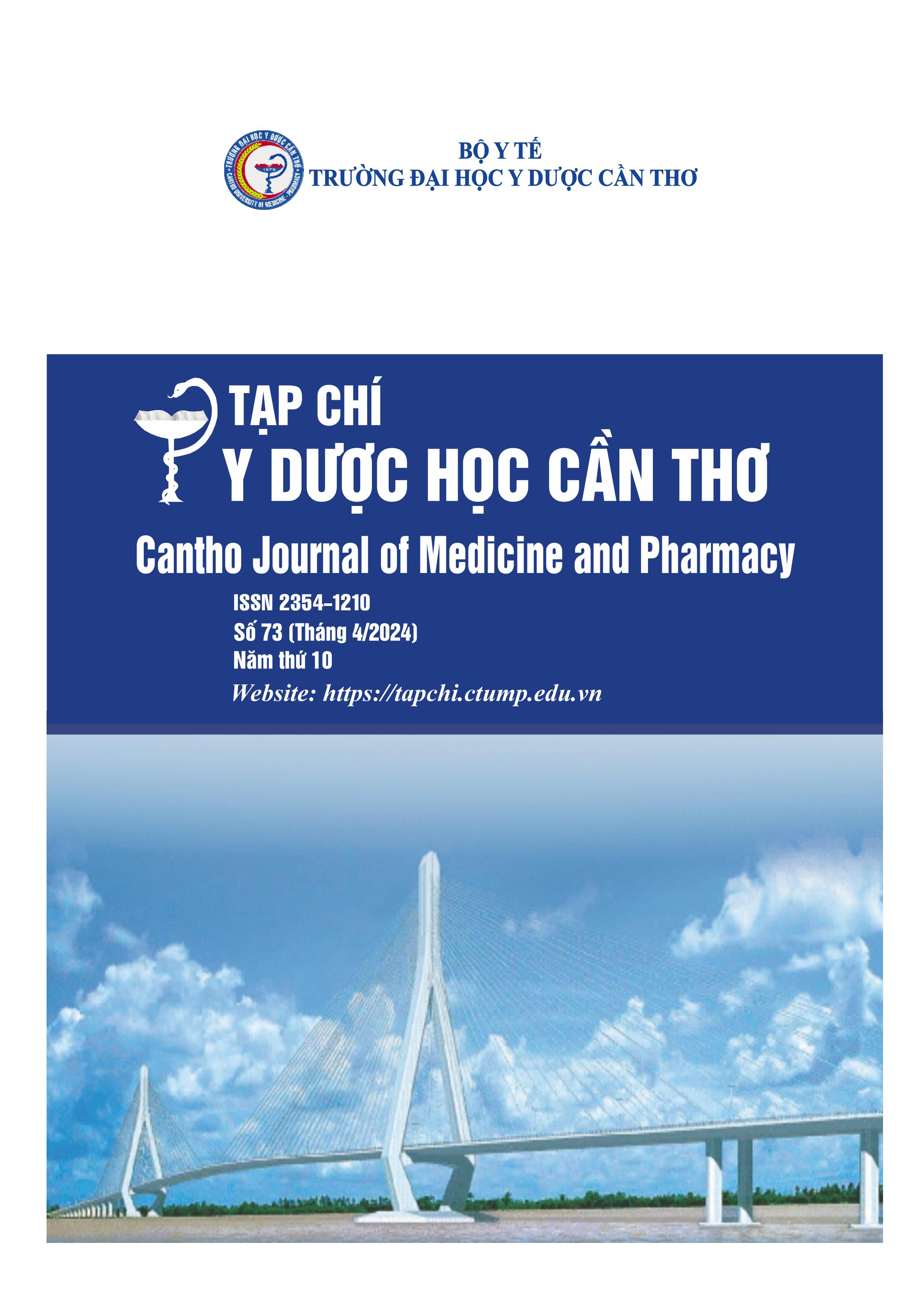STUDY ON CLINICAL CHARACTERISTICS, PARACLINICAL FEATURES, AND EVALUATION OF THE EFFECTIVENESS OF NSAIDS TREATMENT FOR LOW BACK PAIN DUE TO LUMBAR SPONDYLOSIS AT VO TRUONG TOAN UNIVERSITY HOSPITAL'S MUSCULOSKELETAL CENTER
Main Article Content
Abstract
Background: Lumbar spondylosis is a chronic progressive condition characterized by gradual progression leading to pain, limited mobility, and lumbar spine deformity without signs of inflammation, it diminishes the patient's capacity to work and engage in daily activities, significantly impacting their quality of life and productivity. NSAID anti-inflammatory medications are commonly used in the treatment of lower back pain associated with lumbar spine degeneration and are notably effective. Objectives: 1. To investigate the clinical and paraclinical characteristics of patients with lumbar spondylosis. 2. To evaluate the effectiveness of NSAIDs treatment for low back pain due to lumbar spondylosis. Materials and methods: A cross-sectional descriptive study was conducted on 60 patients with lumbar spondylosis presenting for examination and treatment at the Musculoskeletal Center of Vo Truong Toan University Hospital using convenient sampling method. Results: The severity of low back pain on the VAS scale revealed that 60% of the subjects experienced severe pain, while 40% had moderate pain. The effectiveness of pain reduction showed that among subjects with severe pain, 14% experienced moderate pain, 69% experienced mild pain, and 17% were pain-free; among subjects with moderate pain, 67% experienced mild pain, and 33% were pain-free. No undesirable side effects of the intervention treatment were observed. Conclusions: Internal medicine treatment using NSAIDs was effective in improving the VAS pain scores of patients.
Article Details
Keywords
Low back pain, NSAIDs, pain reduction
References
2. Emile Hil Siger, Marian Betan Court. Say Goodbye to Back pain. 2004. 308 - 309.
3. Amor B, Rvel M, Dougados M. Traitment des conflits discogradinculaive par infection intradiscale daprotinine. 1985. 751 - 754.
4. Hồ Hữu Lương. Đau thắt lưng và thoát vị đĩa đệm. Nhà xuất bản Y học, Hà Nội. 2008. 76 - 217.
5. Nguyễn Văn Đăng. Thực hành thần kinh các bệnh và hội chứng thường gặp. Nhà xuất bản Y học, Hà Nội. 2007. 308 - 330.
6. Lê Thế Huy. Đánh giá kết quả điều trị đau cột sống thắt lưng do thoái hóa cột sống bằng bài thuốc KNC kết hợp siêu âm trị liệu và điện châm. Học viện y dược học cổ truyền Việt Nam. 2020. 78.
7. Nguyễn Văn Tuấn. Kết quả điều trị đau dây thần kinh tọa do thoát vị đĩa đệm bằng phương pháp điện châm kết hợp kéo giãn cột sống thắt lưng. Tạp chí y học Việt Nam. 2021. 501 (1), 153-156. 8. Trần Thị Mỹ Thùy – Lê Thị Ngoan. Nghiên cứu một số đặc điểm lâm sàng và các yếu tố liên quan ở người bệnh có đau thắt lưng điều trị nội trú tại Bệnh viện Y học cổ truyền Thành phố Cần Thơ năm 2013- 2014. Luận văn tốt nghiệp đại học, Trường Đại học Y Dược Cần Thơ. 2014.
9. Nguyễn Tuấn Cảnh, Lê Thị Ngoan. Đánh giá kết quả điều trị của xoa bóp bấm huyệt ở người bệnh thoái hóa cột sống thắt lưng tại Bệnh viện Y học cổ truyền Thành phố Cần Thơ. Luận văn tốt nghiệp đại học Trường Đại học Y Dược Cần Thơ. 2013.
10. Đặng Bá Thành, Lê Minh Hoàng. Nghiên cứu đặc điểm lâm sàng, cận lâm sàng và đánh giá kết quả điều trị của bệnh Yêu thống thể can thận âm hư bằng phương pháp y học cổ truyền tại Bệnh viện Y học cổ truyền Thành phố Cần Thơ năm 2016-2017. Luận văn tốt nghiệp đại học, Trường Đại học Y dược Cần Thơ. 2017.
11. Nguyễn Thị Lam, Lê Sỹ Sâm. Khảo sát mức độ giảm đau lưng của kỹ thuật kéo nắn cột sống thắt lưng bằng tay trên bệnh nhân thoái hóa cột sống thắt lưng. Tạp chí Y Học Thành phố Hồ Chí Minh. 2012. Tập 16, số 1/2012, 221-225.


